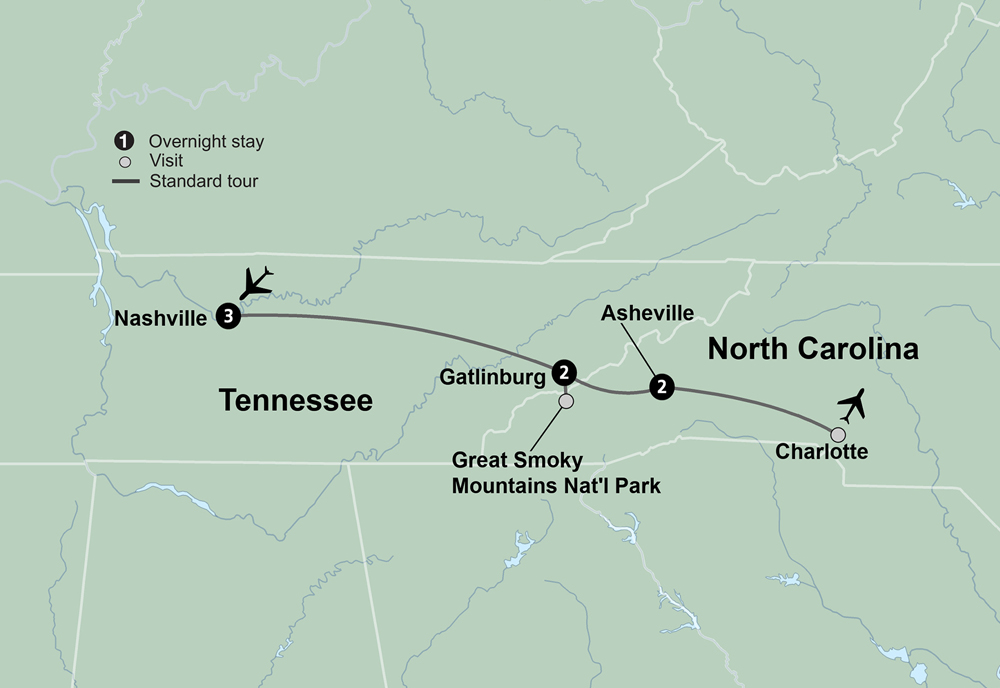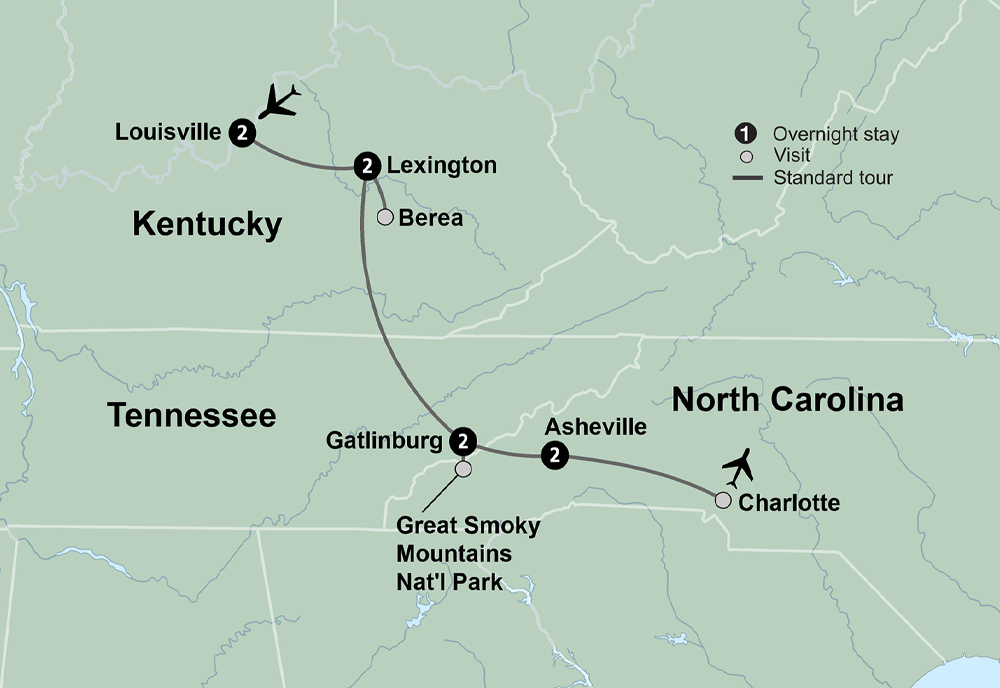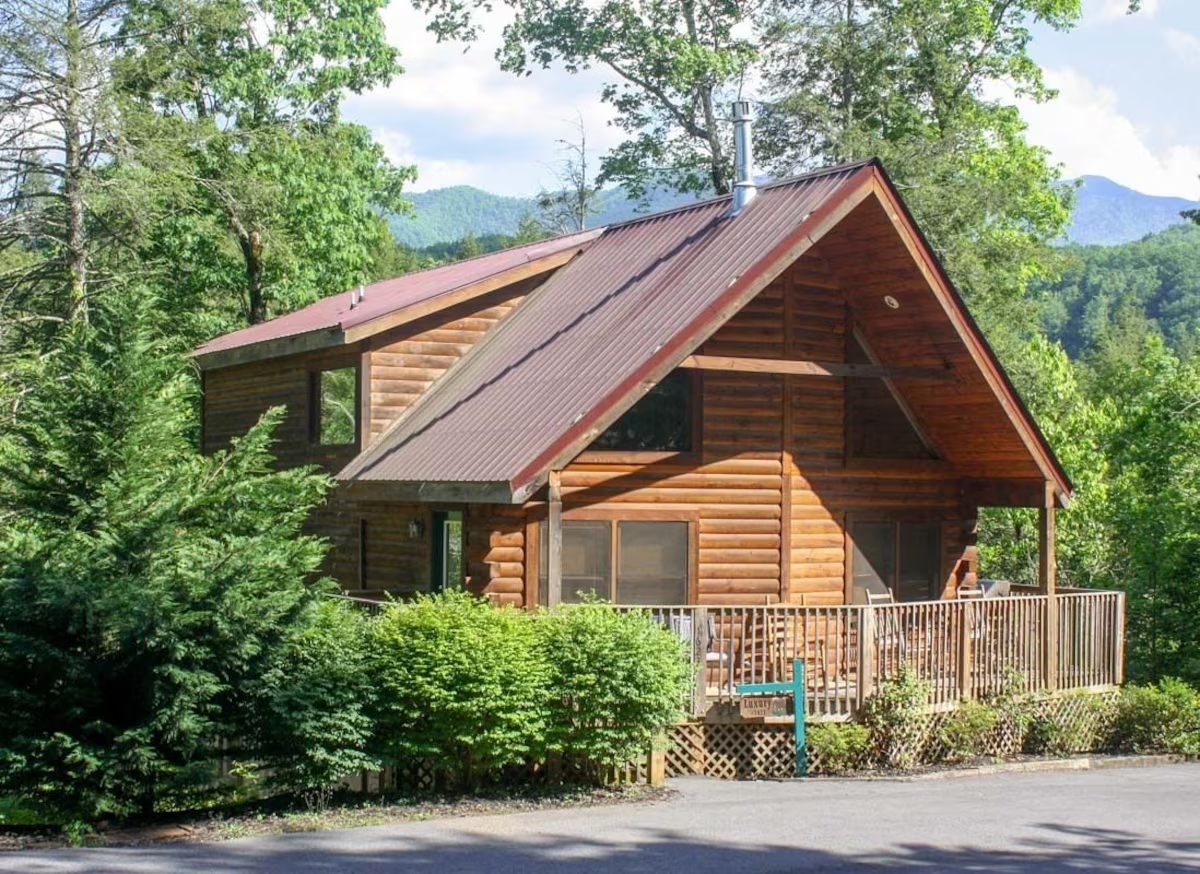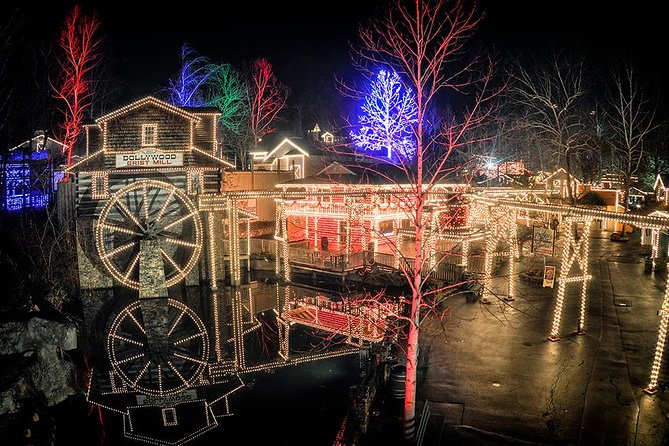The Packing Problem in the Smokies
I’ve seen it more times than I can count—folks stepping onto Smoky Mountain trails with backpacks that could double as furniture movers. Overpacked and overwhelmed, they’re carrying every “just in case” item under the sun while missing the things that truly matter. And it’s not their fault. Between online Smoky Mountains packing lists and flashy outdoor gear ads, it’s easy to lose sight of what you actually need to enjoy the Smokies.
Spring wildflowers in bloom, mist curling over the ridges, crisp fall air through the hollows—this park has a way of making you feel both alive and incredibly small. But that connection can quickly fade when you’re hauling a 40-pound pack full of things you won’t touch. Trust me, I’ve made every packing mistake in the book. I’ve carried rain gear during droughts and left behind essentials on surprise sleet days.

That’s why I put this guide together—not a generic list you’d find on a big-box blog, but a true-to-life checklist drawn from years of hiking, camping, and photographing these mountains in every season. Whether you’re tackling a short family trail near Gatlinburg or heading deep into the backcountry, this list will show you what actually earns a spot in your pack—and what you’ll wish you’d left at home.
Because in the Smokies, every ounce counts—but so does every moment. Let’s make sure you’re ready for both.
💡 Want to skip the stress and land somewhere fully equipped for your adventure? See why seasoned travelers stay at Margaritaville Resort Gatlinburg.
Weather Warnings: The Four-Season Reality
If there’s one truth about the Smoky Mountains, it’s this: the weather has a mind of its own. You can start your hike in sunshine, hit fog by mile two, and finish in a light drizzle—or a full-on downpour. That unpredictability is part of what makes the Smokies so wild and beautiful—but it also means preparation isn’t optional.
Spring:
Expect sudden showers, muddy trails, and cool mornings that warm quickly. Spring in the Smokies is prime wildflower season, but don’t be fooled by the blooms—hypothermia can sneak up on you if you’re soaked and exposed to wind on a higher elevation trail.
Summer:
Hot, humid, and deceptively draining. Afternoon thunderstorms are common, and while the canopy offers shade, the humidity can turn any hike into a sweat-soaked slog. You’ll want breathable layers, electrolyte tabs, and gear that doesn’t trap heat.
Fall:
Cool mornings, warm afternoons, and some of the clearest views of the year. But this is when temperatures swing most dramatically—especially at elevation. A 70-degree trailhead can mean a 40-degree summit, so layers are your best friend.
Winter:
Ice on the trails, black ice on park roads, and dangerously cold wind chills up high. You may still get sunny days, but they can vanish fast into flurries or frost. Footwear traction and thermal layers are essential.
What to Pack No Matter the Season:
- Lightweight waterproof rain shell (preferably packable)
- Layered clothing system (base layer, mid-weight fleece, windbreaker or shell)
- Moisture-wicking socks (avoid cotton—go merino or synthetic)
- Quick-dry hat and gloves (yes, even in spring and fall)
- Emergency blanket or bivvy (adds no weight, but adds peace of mind)
💡 Don’t get caught in a Smokies storm unprepared—see where seasoned travelers stay warm, dry, and close to the trail.
Essential Gear You Shouldn’t Leave Behind
Whether you’re heading out for a casual waterfall stroll or taking on a multi-mile backcountry loop, the gear you bring can make or break your experience in the Smokies. I’ve seen folks turn back at the first mud patch—and others breeze through because they came prepared. Here’s what you actually need, no fluff, just function.
1. Lightweight Hiking Boots
Skip the sneakers. The uneven terrain, stream crossings, and hidden roots demand something sturdier. Trail runners are fine for smooth, low-elevation paths in dry weather—but for anything with rocks, incline, or mud, waterproof mid-height boots are the real MVPs.
2. A Daypack with Hydration System
Forget carrying water bottles by hand. A solid daypack with a 2–3L hydration bladder keeps you sipping as you hike and leaves your hands free. Look for packs with chest and hip straps for better weight distribution and breathable back panels to avoid the dreaded sweat patch.
3. Safety Essentials
Toss these in your bag and thank yourself later:
- Headlamp (in case that “quick hike” turns into a sunset scramble)
- Whistle (three sharp blasts are the universal distress signal)
- Pocket knife or multi-tool (fix a strap, open a snack, or cut cord)
- Compact first-aid kit (bandages, antiseptic, moleskin, meds)
4. Bear Spray
Yes, it’s a thing—and yes, it’s smart. Black bears in the Smokies aren’t typically aggressive, but they’re curious and strong. Bear spray gives you a non-lethal deterrent that could prevent a dangerous encounter. And no, it’s not just for the backcountry—you’ll want it on popular trails too.
5. Phone Charger + Paper Map
Even if you’ve downloaded AllTrails and checked your route twice, don’t rely entirely on tech. Cell signals fade quickly in the hollers and ridgelines. A power bank can help—so can a good old-fashioned park map from the visitor center (waterproof if possible).
💡 Packing right could save your trip—or your life. Stay close to gear shops and trailheads at this hiker-friendly spot.
What to Wear: Trail-Tested Clothing by Season
The Smokies aren’t a fashion show—they’re a lesson in layering, function, and knowing how fast conditions can turn. What you wear can mean the difference between a carefree hike and an uncomfortable slog back to the car. Here’s the gear you’ll actually be grateful to have, season by season.
Base Layers Matter More Than You Think
Start with moisture-wicking base layers—they’re your first line of defense. Cotton holds moisture (aka cold, sweat, or rain), which leads to chafing and chill. Go with merino wool or synthetic blends that pull sweat away from your skin and dry fast.
- Spring & Fall? Think long sleeves that breathe.
- Winter? Thermal weight, but breathable.
- Summer? Lightweight and vented, preferably with UPF protection.
Yes, Convertible Pants Are Worth It
I know, I know—zip-off pants aren’t exactly cool. But when you’re hiking in crisp mornings that turn into sun-soaked afternoons, being able to switch from pants to shorts on the fly is a game changer. Add pockets and water resistance? You’re golden.
Rain Gear That Actually Works
Not all rain jackets are created equal. Those plastic ponchos you get at tourist shops? They trap heat and tear fast. Invest in a breathable waterproof shell (look for Gore-Tex or similar). For pants, lightweight overtrousers can pack down small and save your hike in a downpour.
And don’t forget: spring and summer storms here love to show up uninvited.
Footwear for Trail and Town
If you plan on heading into Gatlinburg after your hike (and you should), it’s smart to pack camp shoes or lightweight slip-ons for a post-hike wander. Keep your boots for the trail—your feet will thank you, and your fellow diners won’t be dodging your mud trail at dinner.









What NOT to Pack: Save Space and Sanity
Packing for the Smokies? Here’s a hard truth: what you don’t bring is just as important as what you do. Whether you’re hitting Alum Cave or strolling to Laurel Falls, hauling unnecessary weight slows you down, stresses you out, and makes the trip feel like a chore.
Skip the Fashion Show: You Don’t Need 5 Shirts
One of the most common beginner mistakes? Overpacking clothes. You’ll be in activewear most of the time—and most of it can be re-worn. Prioritize breathable, quick-dry items that work double-duty. If you’re hiking 2–3 days, two sets of clothes is usually plenty, plus a fresh change for evening.
Gadgets That Never Leave the Pack
Look, we all love our gear—but drones are banned in national parks, and lugging around a tripod or full camera rig is a hassle unless you’re a pro. Your phone, a solid phone clip, and a small battery pack will do the job just fine for 99% of travelers.
Heavy Water Bottles? Not Smart
Instead of hauling around two liters of water on every hike, bring a lightweight filter or purification tablets. Most trails have access to streams and springs—just check conditions ahead of time. A collapsible bottle or hydration bladder is easier to carry and refill as needed.
Leave the Kitchen Sink at Home
We’ve all seen them: the over-prepared crew dragging full coolers up paved paths or lugging around three pairs of shoes “just in case.” Unless you’re camping or staying at a backwoods cabin, you don’t need full-size anything—not toiletries, not towels, and definitely not a picnic table worth of food.
Family and Kids: Smart Add-Ons for Little Explorers
If you’re heading into the Smokies with kids, your packing list shifts a bit—because let’s be honest, a meltdown at mile two can make or break the day. But with just a few smart additions, you’ll be ready for whatever the mountain (or your toddler) throws your way.
Hydration Packs Built for Smaller Backs
Forget hauling a giant water bottle for your kid every 15 minutes. A child-sized hydration pack gives them independence—and gives you a break. Bonus: they love drinking from the straw like the grownups do.
Trail-Ready Snacks That Don’t Melt or Crumble
Granola bars? Good. Fruit leather? Great. Anything with chocolate? Risky. Pack snacks that hold up in heat, jostling, and sticky fingers. Dried fruit, trail mix (sans candy), and squeeze applesauce hit the sweet spot between tasty and portable.
Entertainment for Cabin Time or Rainy Afternoons
You’ll be outdoors a lot, but you’re not immune to rain delays. A couple of small books, a deck of cards, or a compact travel game can work wonders when cabin fever kicks in. Think lightweight, quiet, and ideally something everyone can play.
Layers, Layers… and Spare Socks
The Smokies are notorious for microclimates. It might be sunny at Sugarlands and chilly up at Clingmans Dome. Pack a light fleece, a rain layer, and at least two pairs of socks for each kid—even on short hikes. Dry feet = happy hikers.
Your little adventurers deserve a place to recharge. Choose a cabin where families come first—comfort, convenience, and a killer view.
Must-Haves for Wildlife and Scenic Stops
The Smokies aren’t just famous for their misty ridgelines—they’re home to black bears, elk herds, and birdlife that’ll make even the casual hiker pause. But to truly get the most out of wildlife encounters and scenic breaks, you’ll want to come prepared—without overpacking.
Binoculars or Smartphone Zoom Lenses
You don’t need a massive telephoto lens to spot wildlife. A good pair of compact binoculars or a clip-on smartphone zoom lens can make a huge difference. Elk at a distance, or a bear crossing a field near Cades Cove? You’ll catch it all, safely.
Wildlife-Safe Snacks and Storage
Keep your snacks sealed and unscented—not just for safety, but out of respect for the animals. Opt for airtight bags or bear-safe containers, especially if you’re picnicking or taking long scenic stops. Remember: fed wildlife is doomed wildlife.
Best Time of Day to Spot Wildlife
Early morning or dusk is prime viewing time. The trails are quieter, the light is golden, and the wildlife is active. If you’re driving scenic routes like Newfound Gap Road or walking paths like Oconaluftee River Trail, keep your eyes open around these times.
Trail Maps with Wildlife Markers
Many Smoky Mountain trail maps note known wildlife corridors, grazing fields, or habitat zones. Whether digital or printed, having a map with wildlife hotspots marked lets you plan scenic breaks where you’re most likely to catch a glimpse of something magical.
Bonus: What to Pack for Downtown Gatlinburg
After a few hours trekking through pine-lined trails or chasing waterfalls, Gatlinburg’s downtown is like stepping into a different world—buzzing with smells, sights, and local charm. But if you don’t pack with both wild and civilized worlds in mind, you might find yourself in hiking boots at a moonshine tasting… and that’s not ideal.
Day Shoes vs. Trail Shoes
Hiking boots are perfect for the trail—but when you hit The Village Shops or stroll the Gatlinburg SkyPark, your feet will thank you for bringing lightweight walking shoes or slip-ons. Toss a pair in your car or daypack if you’re doing a nature-town combo day.
Budget for Shops, Arcades, and Moonshine Tastings
Downtown isn’t just for souvenirs. From saltwater taffy and handmade crafts to Old Smoky Moonshine samplers and vintage arcades, it’s easy to spend a little more than you planned. Set aside a small cash budget or gift card for spontaneous treats—you’ll be glad you did.
When to Go Back to Your Room and Change (Yes, Really)
If you’re staying nearby, take 20 minutes to head back and swap sweaty trail gear for breathable clothes. Not only will you be more comfortable, but you’ll blend in better with the vibe of the shops, distilleries, and restaurants. It’s worth the reset.






Pack Light, Live Big
So there you have it—your no-nonsense packing list for the Smokies, straight from someone who’s learned (sometimes the hard way) what really matters out there.
✅ Quick Final Checklist
Before you zip up that bag, make sure you’ve got:
- Lightweight hiking boots or shoes
- Moisture-wicking layers
- Trail snacks + hydration
- First-aid basics
- A sense of adventure (and a backup map)
🧭 Last-Minute Stops in Town
If you realize you’re missing something, don’t stress. Gatlinburg has plenty of outdoor outfitters, general stores, and gear rental shops—especially near the park entrances. And hey, local staff know what works here better than anyone. Don’t be afraid to ask.
🌄 A Final Word from the Trail
This place isn’t just another mountain range. It’s where memories are made, trails challenge you in all the right ways, and the quiet moments remind you why you came in the first place. Pack smart, stay flexible, and don’t let your luggage drag you down—mentally or physically.
You’re going to have an amazing trip. And the less stuff you carry, the more space you’ll have for stories, photos, and the kind of experiences that stick with you long after your boots are off.





















Leave a Reply